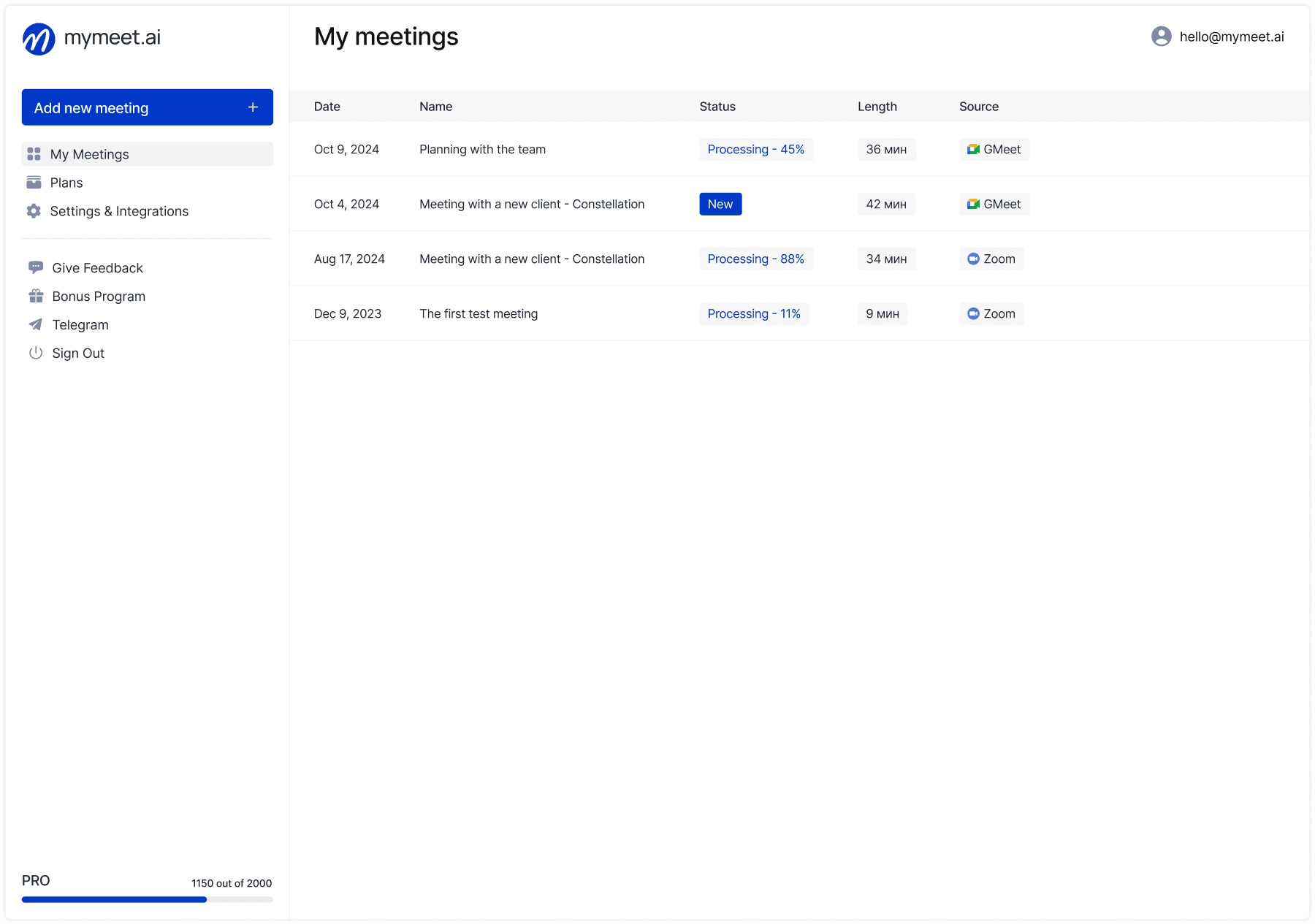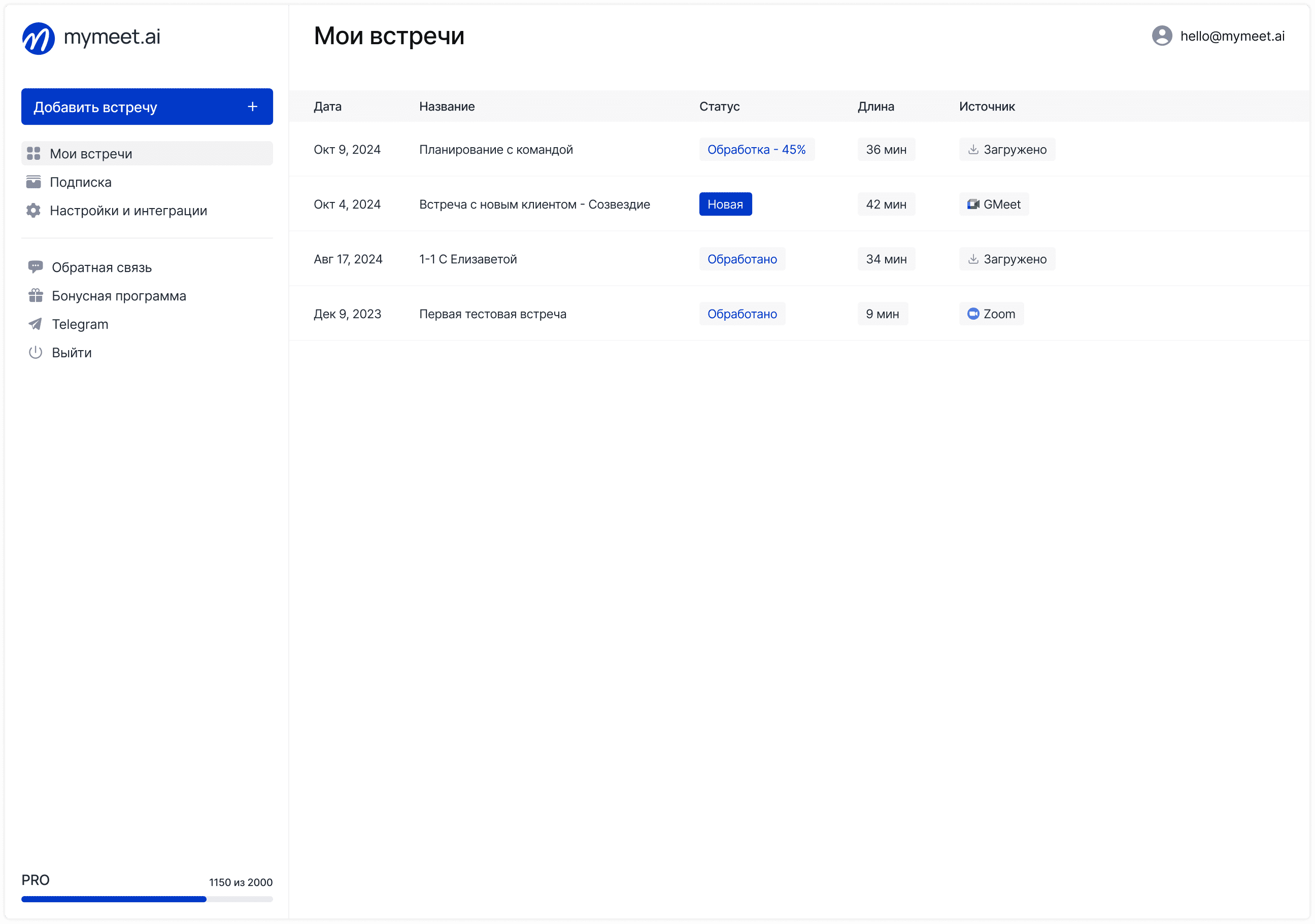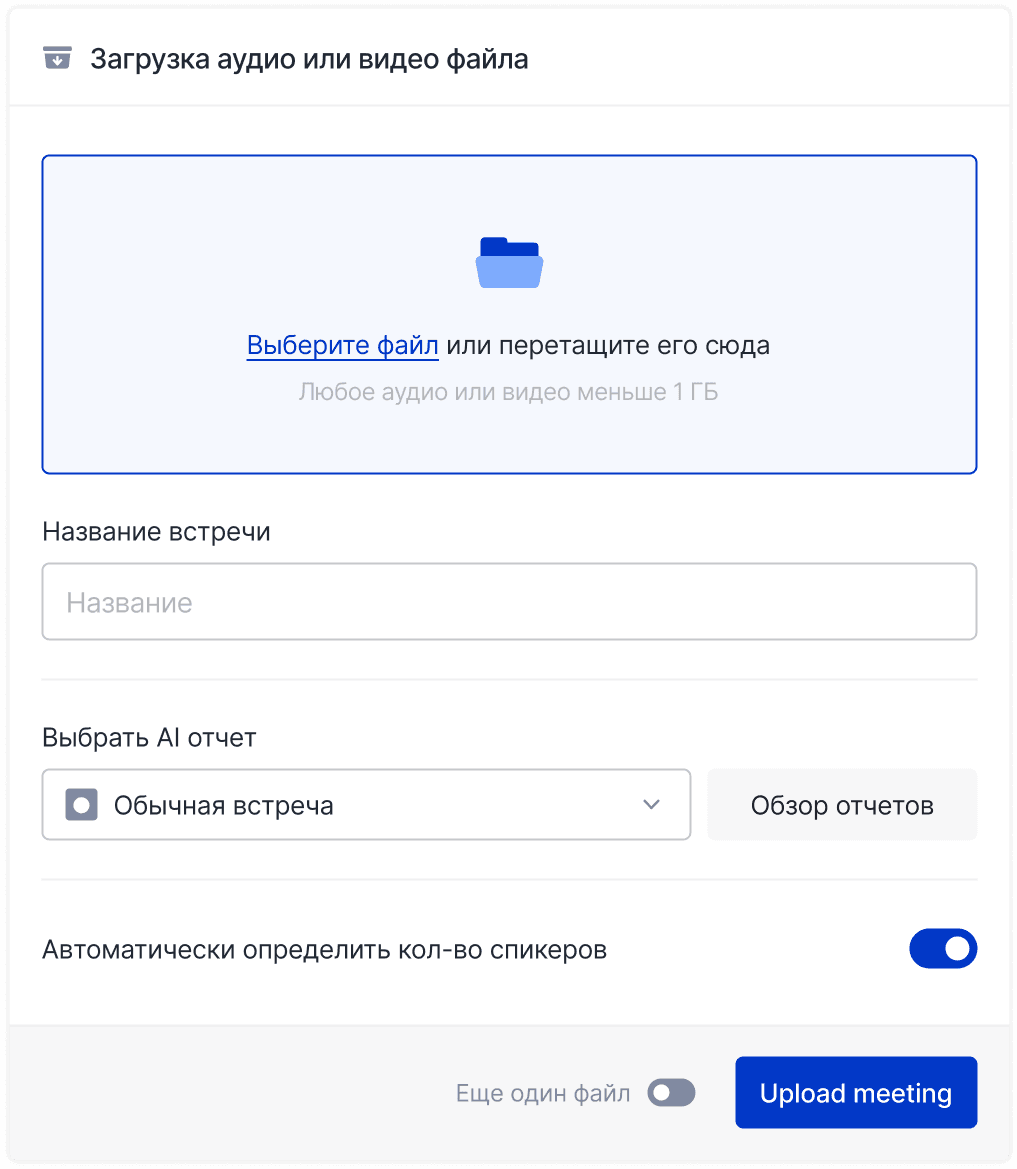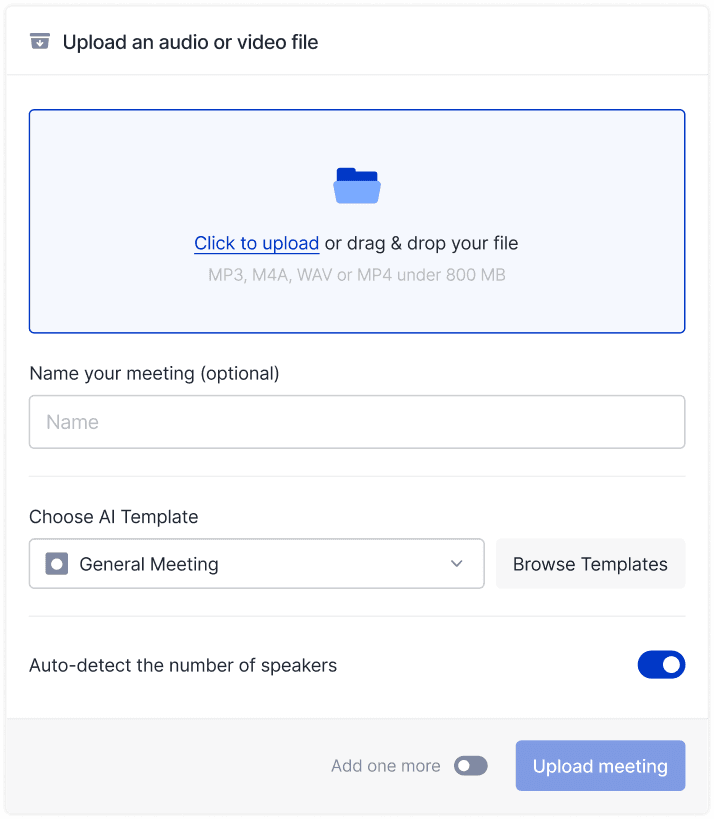Meeting Tips

Radzivon Alkhovik
Oct 8, 2025
Zoom Workplace combines more than 40 work applications into a unified platform, but 85% of corporate users don't understand the difference from regular Zoom and overpay for features they don't use. Meanwhile, some organizations lose critical automation capabilities by staying on basic Zoom instead of transitioning to Workplace.
Hello! The mymeet.ai team analyzed all differences between classic Zoom and new Zoom Workplace. We'll show you which solution your company really needs and how to avoid overpaying for unnecessary functionality or losses from lack of capabilities.
Zoom vs Zoom Workplace: Fundamental Differences
Zoom and Zoom Workplace solve different corporate communication tasks — targeted video conferencing versus comprehensive work ecosystem.
What Is Regular Zoom

Classic Zoom is created for one task — quality video conferencing. Every feature is optimized for conducting effective meetings with maximum stability and ease of use.
Core Zoom capabilities:
HD video conferencing up to 1,000 participants
Breakout rooms for small group work
Screen sharing with annotations
Meeting recording locally and to cloud
Basic chat during meetings
Meeting scheduling through calendars
Zoom focuses on ensuring meetings run without technical problems. Simple interface, stable connection, quick participant joining.
What Is Zoom Workplace

Zoom Workplace is a comprehensive platform for all aspects of remote work, where video conferencing becomes part of a large ecosystem of tools.
Extended Workplace capabilities:
All classic Zoom features
Zoom Team Chat — persistent team channels
Zoom Whiteboards — collaborative interactive boards
Zoom Docs — document creation and editing
Zoom Calendar — event planning and management
Zoom Mail — corporate email
AI Companion — AI assistant for meetings and tasks
Workplace transforms scattered work tools into a unified platform with common interface and data.
Key Approach Differences
Zoom — specialization: Masterfully performs one task — video conferencing. Integrates with any external systems through an extensive application ecosystem.
Zoom Workplace — integration: Combines multiple work tools in a unified platform with seamless transitions between functions and shared data.
Feature Comparison: Zoom vs Zoom Workplace
Detailed comparison will show which platform better handles specific business tasks for your organization.
Video Conferencing: Classic Zoom vs Workplace
Video connection quality remains the foundation of any meeting platform.
Classic Zoom:
Focus on stability and video quality
Optimized system resource usage
Quick connection and reliable operation
Minimal distracting interface elements
Zoom Workplace:
Same video conferencing engine as classic Zoom
Additional AI assistant capabilities during meetings
Integration with other platform tools
May consume more resources due to additional features
Verdict: Video conferencing quality is identical, but classic Zoom may work more stably on weak devices.
Team Collaboration
Capabilities for continuous team interaction between meetings.
Classic Zoom:
Basic chat only during meetings
File sharing limited to meetings
Requires integration with external tools for continuous communication
Zoom Workplace:
Persistent Team Chat channels for all projects
Structured conversations with threads
Real-time collaborative document editing
Interactive boards for visual planning
Verdict: Workplace significantly excels for teams needing continuous collaboration.
AI Capabilities and Automation
Using artificial intelligence to increase productivity.
Classic Zoom:
Basic noise suppression and video optimization
AI features available through third-party integrations
Limited automatic meeting analysis capabilities
Zoom Workplace:
AI Companion for meeting summary generation
Automatic actions based on discussions
AI assistance in content creation and planning
Intelligent suggestions for work optimization
Verdict: Workplace offers deeper AI integration out of the box.
Zoom vs Zoom Workplace: Comparison Table
Direct comparison of key characteristics will help quickly assess which platform matches your organization's needs.
Feature | Zoom | Zoom Workplace | Best Choice |
Video Conferencing | HD up to 1,000 participants | HD up to 1,000 participants | Equivalent |
Ease of Use | Very simple | More complex due to multiple functions | 🏆 Zoom |
Persistent Chats | No | Team channels with threads | 🏆 Workplace |
Documents | Display only | Creation and editing | 🏆 Workplace |
AI Assistant | Basic | AI Companion built-in | 🏆 Workplace |
Integrations | 2,000+ applications | Limited external | 🏆 Zoom |
Cost | From $14.99/month | From $36/month | 🏆 Zoom |
Performance Speed | Optimized | May be slower | 🏆 Zoom |
Project Management | Through integrations | Built-in tools | 🏆 Workplace |
External Meetings | Simple connection | May require account | 🏆 Zoom |
Overall Score: Zoom — 4 wins, Workplace — 4 wins, 2 equivalent
Zoom wins in simplicity and cost. Workplaces are better for comprehensive team work.
Zoom vs Zoom Workplace Pricing: What's More Expensive
Financial differences between platforms can be critical when choosing corporate solutions.
Classic Zoom Pricing
Proven pricing model focused on video conferencing:
Basic: Free (40 minutes for groups)
Pro: $14.99/month per user
Business: $19.99/month per user
Enterprise: From $19.99/month per user
Zoom Workplace Cost
Premium solution with comprehensive functionality:
Zoom Workplace: From $36/month per user
Includes: All Enterprise Zoom features + Team Chat + Whiteboards + Docs + Calendar + AI Companion
Real Savings or Overpayment
For a 50-person team per year:
Zoom Business: $19.99 × 50 × 12 = $11,994 (≈₽960,000)
Zoom Workplace: $36 × 50 × 12 = $21,600 (≈₽1,730,000)
Difference: $9,606 per year (≈₽770,000) — this money can buy quality integrations for classic Zoom.
When Workplace Pays Off
Workplace justifies its cost when replacing several tools:
Slack for chats ($8/month)
Miro for boards ($8/month)
Google Workspace for documents ($6/month)
Calendar and task planner ($5/month)
Total savings: $27/month versus $16/month Workplace surcharge = $11/month savings per user.
Mymeet.ai for Zoom and Zoom Workplace: Meeting Analysis of Any Complexity

Regardless of choice between classic Zoom and Workplace, both platforms have limitations in analyzing and structuring meeting information. Mymeet.ai transforms any meeting into actionable insights with deep analytics.

✅ Support for both platforms — works with classic Zoom and Zoom Workplace without quality differences
✅ Automatic meeting protocols — structured reports with decisions, assignments, and deadlines

✅ AI analysis exceeding built-in — specialized reports for sales, HR, project meetings
✅ Integration with Russian systems — synchronization with domestic CRM and document management

✅ 152-FZ compliance — data processed according to Russian requirements
✅ Interactive meeting search — ask questions and get precise answers from any past calls
Practical Case: Platform Choice with Analysis Consideration
A consulting company (25 consultants) was choosing between Zoom Business and Zoom Workplace. The workplace was attracted with integrated tools, but the team already used specialized project solutions.
Decision: Classic Zoom Business + mymeet.ai for meeting analysis + existing tools.
Results:
$400/month savings versus Workplace
Retention of familiar project tools
Better meeting analysis than built-in AI
Automatic client presentation reports with feedback capture
Weekly project summaries based on team meetings
Outcome: Targeted savings + better functionality through specialized solutions.
Get maximum value from any Zoom platform. Contact a consultant through the form to set up automatic meeting analysis for your processes.

When to Choose Regular Zoom
Classic Zoom remains the optimal choice for certain organization types and usage scenarios.
Companies That Suit Classic Zoom
Organizations with existing technology stack. If the team already uses Slack for chats, Notion for documents, Trello for projects — classic Zoom integrates better than replacing all tools with Workplace.
Companies with frequent external meetings. Clients, partners, contractors connect easier to Zoom's simple interface. Workplaces may create barriers for external participants.
Startups and small businesses with limited budgets. The $16-21/month per user difference is critical for young companies. Better to spend this money on specialized tools.
Teams with high stability requirements. Classic Zoom works faster and more stably on weak devices, consuming fewer resources.
Usage Scenarios for Classic Zoom
Consulting agencies with client presentations
EdTech projects with mass webinars
International teams with varying internet quality
Companies on Google Workspace or other non-Zoom ecosystems
When to Choose Zoom Workplace
Zoom Workplace justifies its cost for companies with specific collaboration needs.
Organizations for Zoom Workplace
Teams without established workflows. New companies or departments can immediately build processes on a unified platform instead of integrating scattered tools.
Companies replacing multiple tools. If an organization pays for Slack + Miro + Google Workspace — Workplace may be more cost-effective and convenient.
Teams with intensive internal collaboration. Constant project discussions, collaborative documents, planning in a unified interface.
Organizations with centralized management requirements. Unified platform simplifies user administration, security policies, and data control.
Scenarios for Choosing Workplace
Remote development teams with constant collaboration
Creative agencies with collaborative project work
Consultants fully transitioning to remote work
Startups building workflows "from scratch"
Migration Between Zoom and Zoom Workplace
Transitioning from one platform to another requires planning to minimize work disruption.
Transitioning from Zoom to Zoom Workplace
Organizations often underestimate Workplace migration complexity, thinking it's a simple upgrade. In reality, the team faces learning a fundamentally new work approach.
Main challenge — training team on dozens of new functions: channels, boards, documents, calendar. Employees accustomed to simple Zoom may lose productivity in the first weeks. Data migration requires technical expertise — incorrect transfer can lead to important meeting record loss.
Action plan:
Audit used tools and team processes
Create channel and project structure in Workplace
Phased team transition with functionality training
Integration with critically important external systems
Transitioning from Zoom Workplace to Classic Zoom
Reverse transition happens with unfulfilled platform expectations or changing business requirements.
Loss of integrated tools creates gaps — teams lose central place for discussions, collaborative document work. Finding replacements requires time and budget. Savings from abandoning the workplace may be consumed by alternative solution costs.
Action plan:
Choose alternative tools for chats, documents, boards
Export important data from Workplace
Set up classic Zoom integrations with chosen tools
Train team on new technology stack
Conclusion: Make Choices Based on Real Needs
Zoom and Zoom Workplace are tools for different approaches to remote work organization. Classic Zoom excels as a specialized video conferencing solution with maximum integration flexibility. Workplace is better as a comprehensive platform for teams ready to work in a unified ecosystem.
Don't choose Workplace just for "novelty" or classic Zoom just for price. Evaluate real needs: does the team need constant collaboration, do you already use other tools, is budget critical. The right choice will increase productivity and save money long-term.
Ready to make an informed choice between Zoom and Zoom Workplace? Test both platforms with real meeting effectiveness analysis. Try mymeet.ai free — 180 minutes meeting analysis without card binding.
FAQ: Zoom vs Zoom Workplace
What's the difference between Zoom and Zoom Workplace?
Zoom is a specialized video conferencing platform with integrations through external applications. Zoom Workplace is a comprehensive work ecosystem including chats, documents, boards, calendar, and AI assistant in addition to video conferencing.
Zoom Workplace cost — how much more expensive than regular Zoom?
Zoom Business costs $19.99/month, Zoom Workplace — $36/month per user. $16/month difference can pay off when replacing multiple tools (Slack + Miro + documents), but significant overpayment for simple video conferencing.
Zoom vs Zoom Workplace video quality — are there differences?
Video conferencing quality is identical — both platforms use the same engine. Classic Zoom may work more stably on weak devices due to lower resource consumption from Workplace's additional features.
When to choose Zoom Workplace instead of regular Zoom?
Workplace is optimal for new teams without established processes, organizations replacing multiple tools simultaneously, teams with intensive constant collaboration. Classic Zoom is better with existing technology stack and frequent external meetings.
Can you transition from Zoom to Zoom Workplace without data loss?
Yes, transition is possible preserving meeting recordings, contacts, settings. Will require time training team on new interface and setting up additional features — channels, documents, integrations.
Zoom Workplace integrations — does it work with external services?
Workplace has limited external integrations compared to classic Zoom (2,000+ applications). Focus on your own tool ecosystem. If you need CRM, project system integrations — classic Zoom is more flexible.
Zoom Workplace for small business — worth overpaying?
For small businesses, classic Zoom is often more cost-effective. $16-21/month per user savings better spent on specialized tools. Workplace justified with complete remote work transition from scratch.
AI in Zoom vs Zoom Workplace — what capabilities?
Classic Zoom has basic AI features (noise suppression). Workplace includes AI Companion for summary generation, automatic actions, planning assistance. For deep meeting analysis better use specialized solutions like mymeet.ai.
Zoom Workplace security — different from classic Zoom?
The security level is identical — same encryption standards, access control, regulatory compliance. Workplaces may have more potential vulnerability points due to additional platform components.
How to test Zoom Workplace before purchase?
Zoom offers a 30-day Workplace trial with full functionality. Recommended testing on real team workflows, comparing productivity with current tools, evaluating unified platform convenience versus specialized solutions.
Radzivon Alkhovik
Oct 8, 2025








